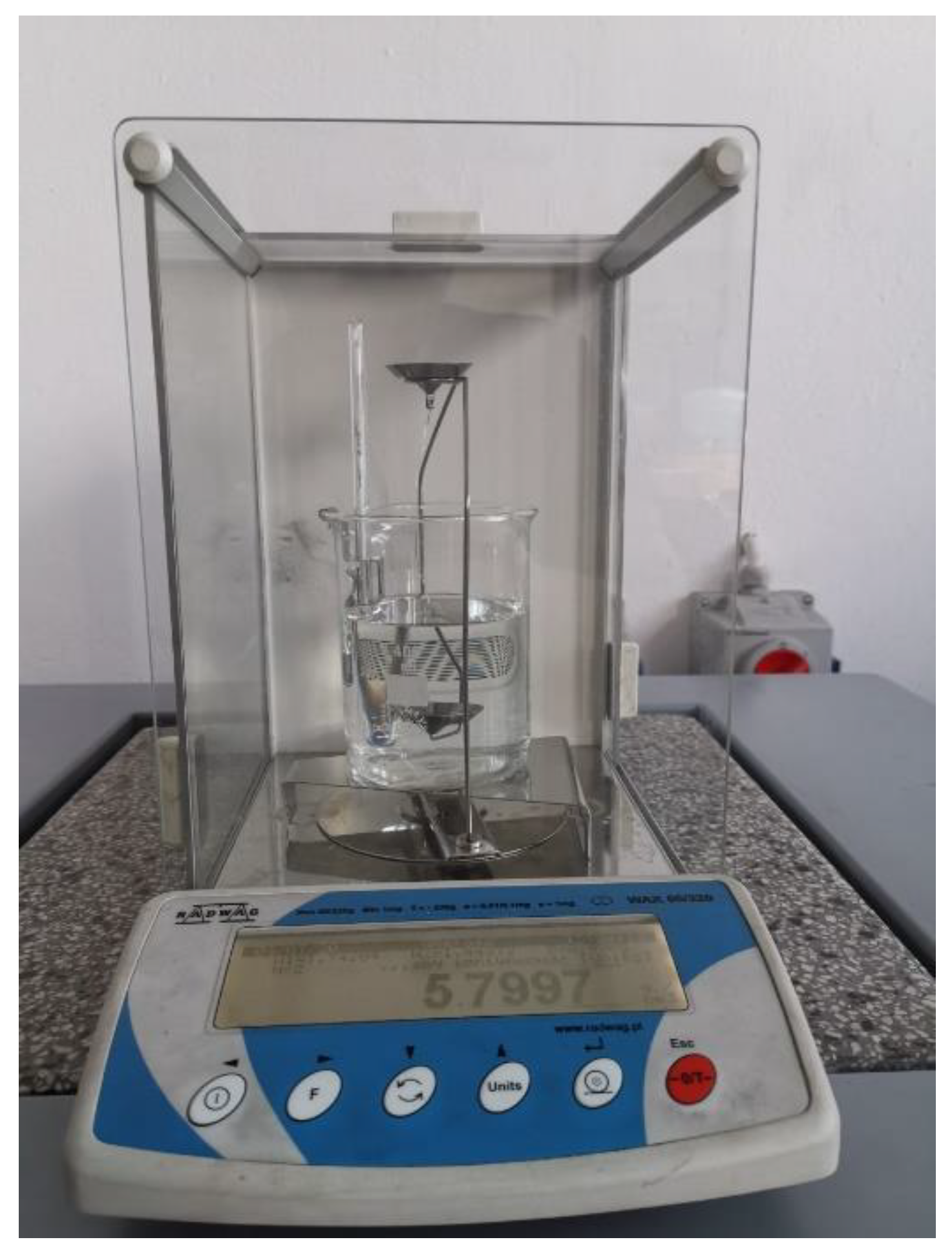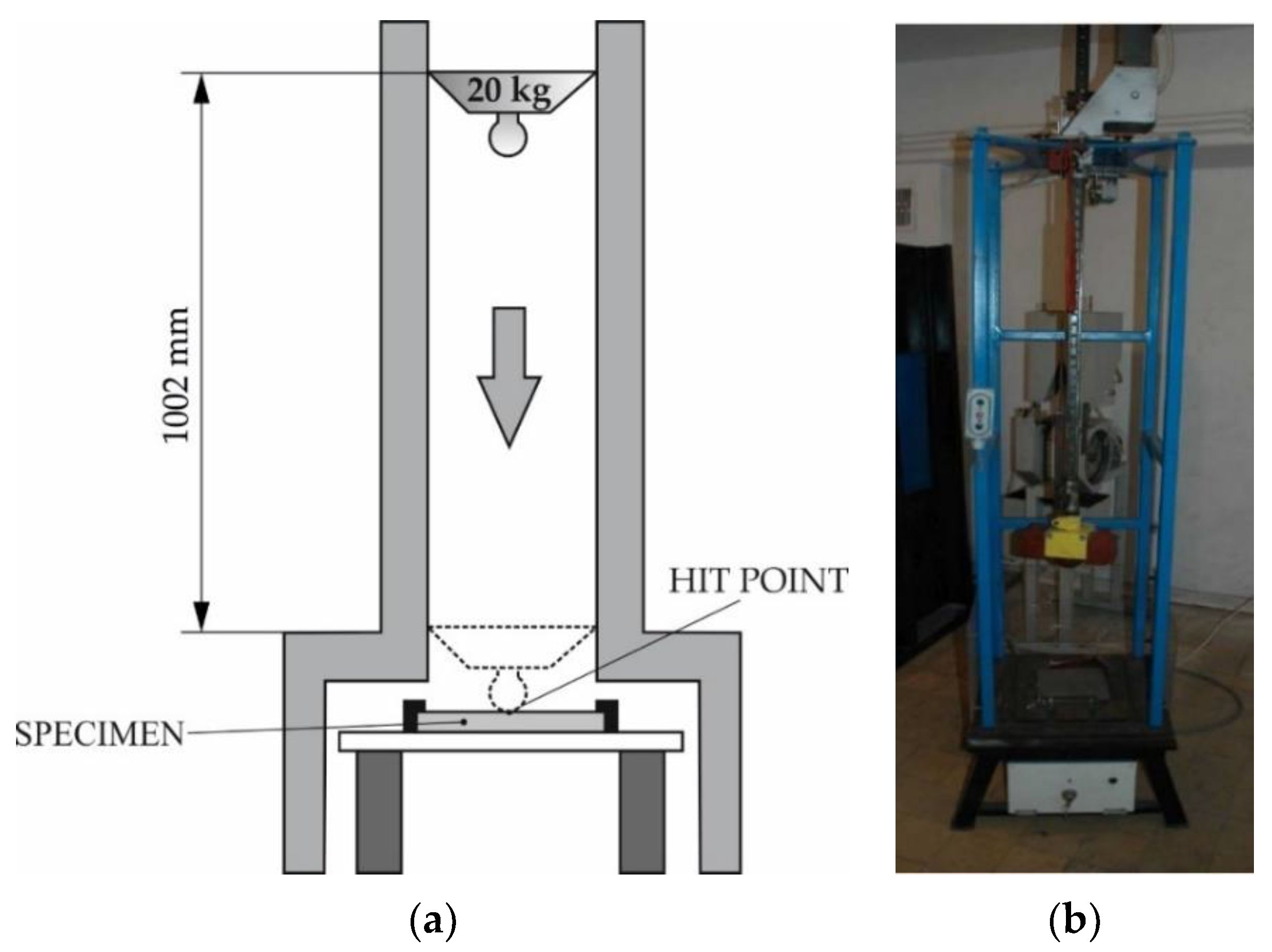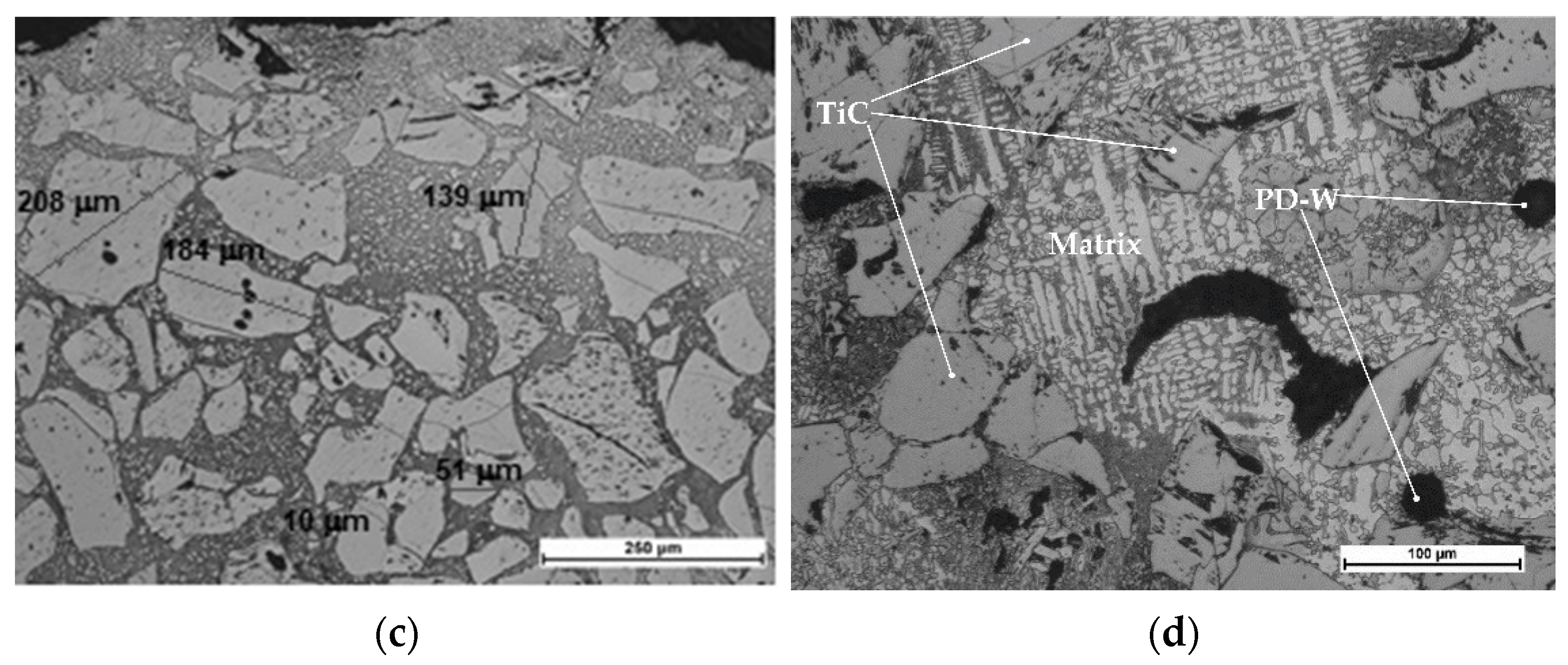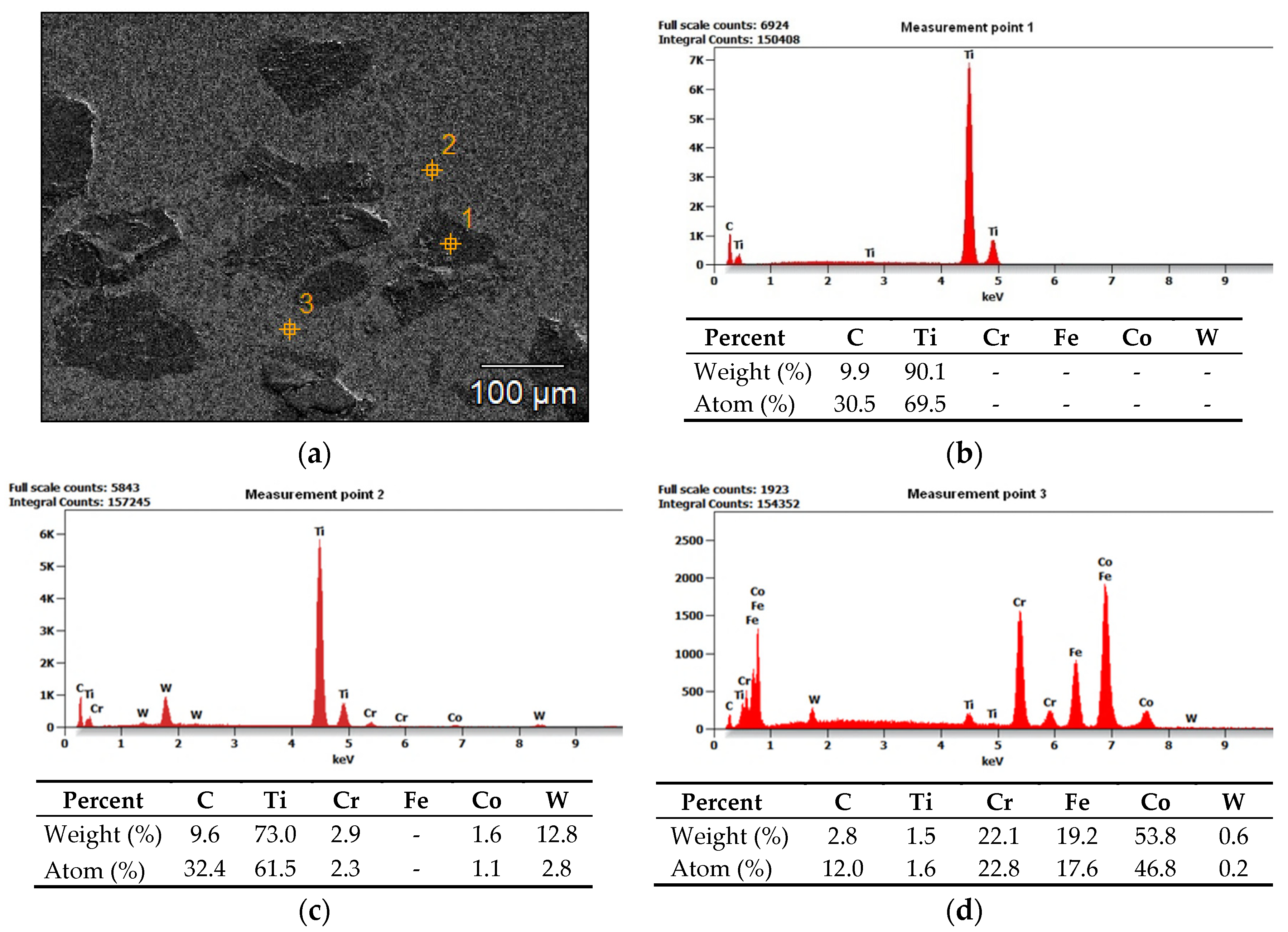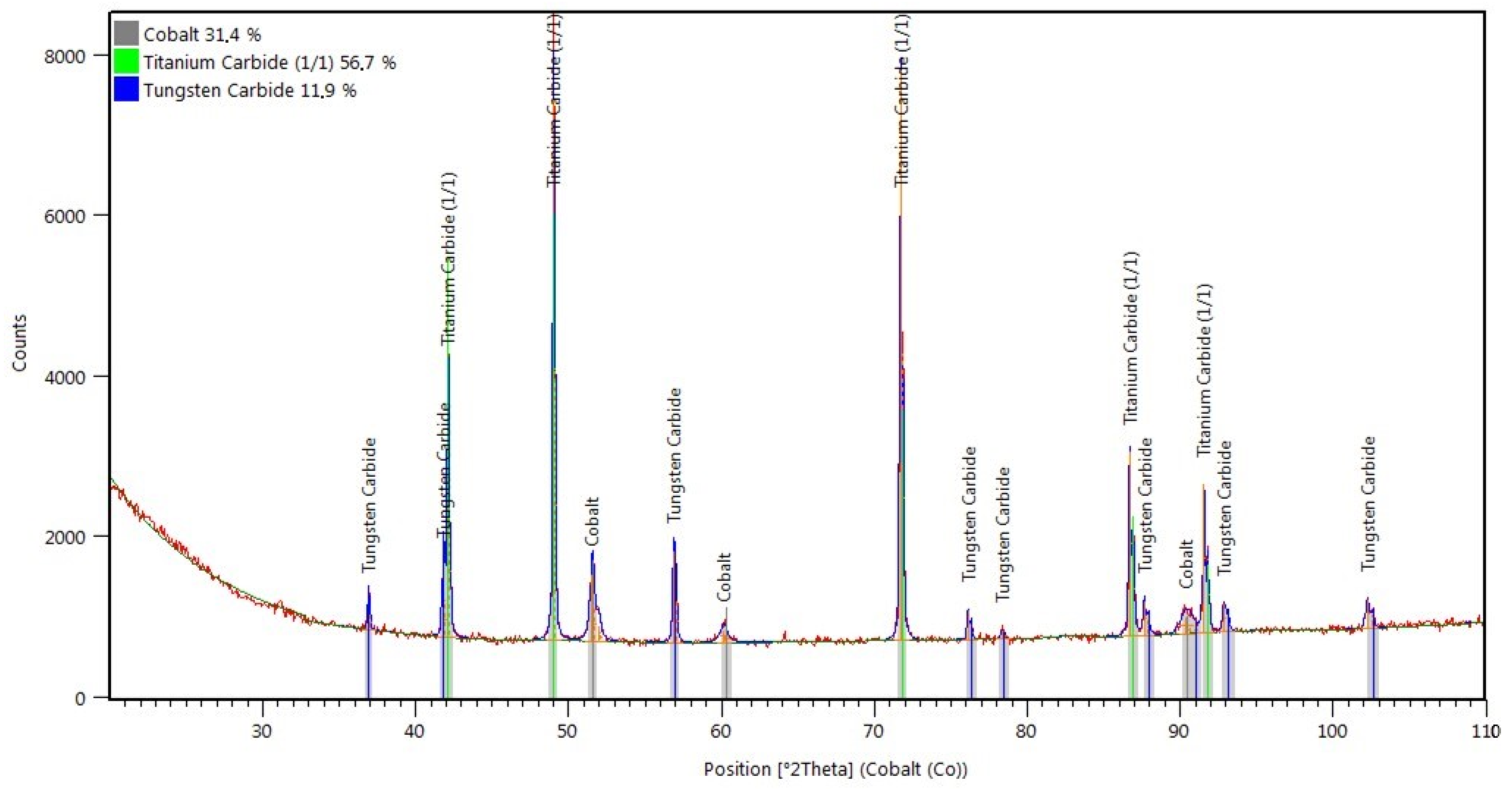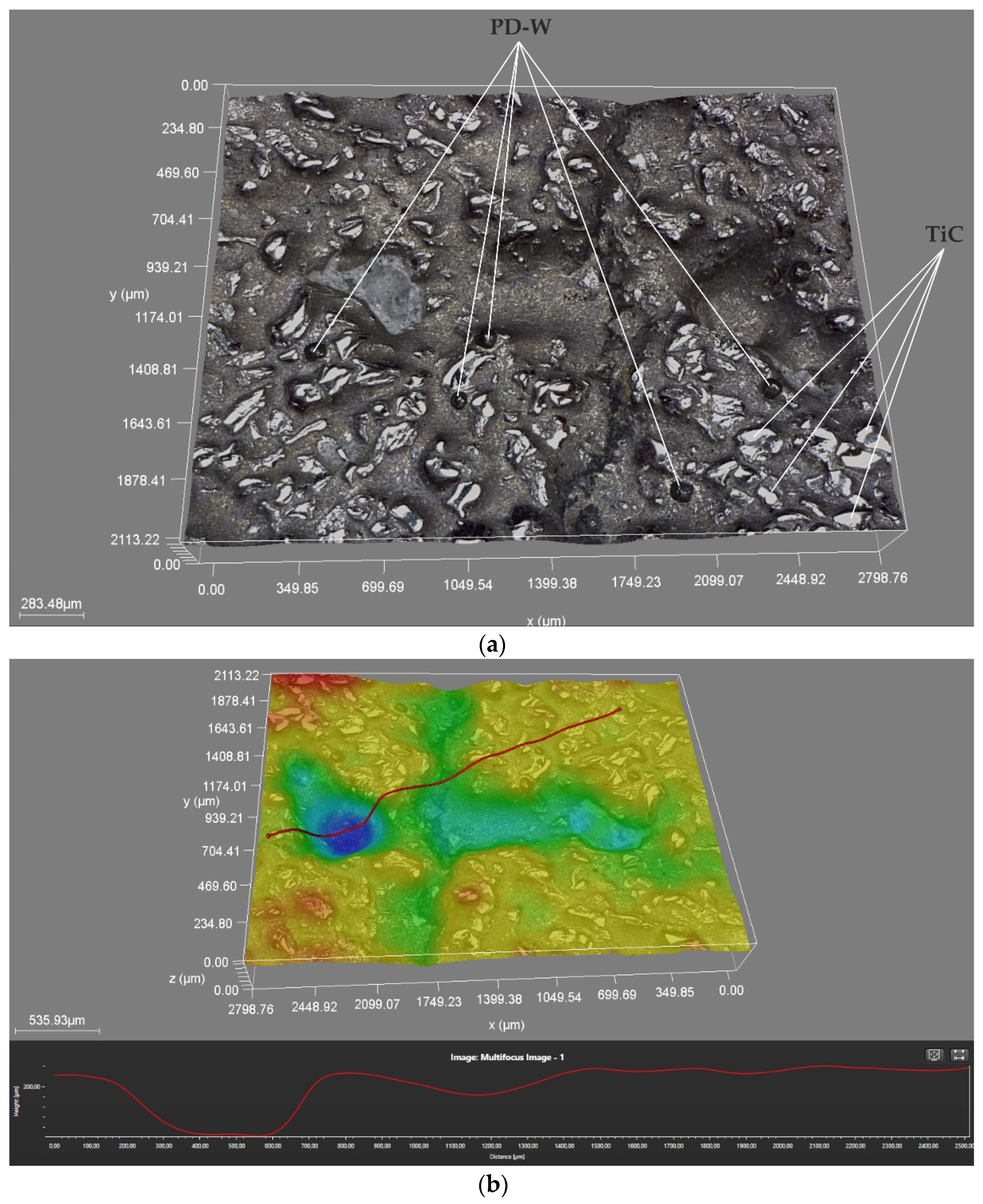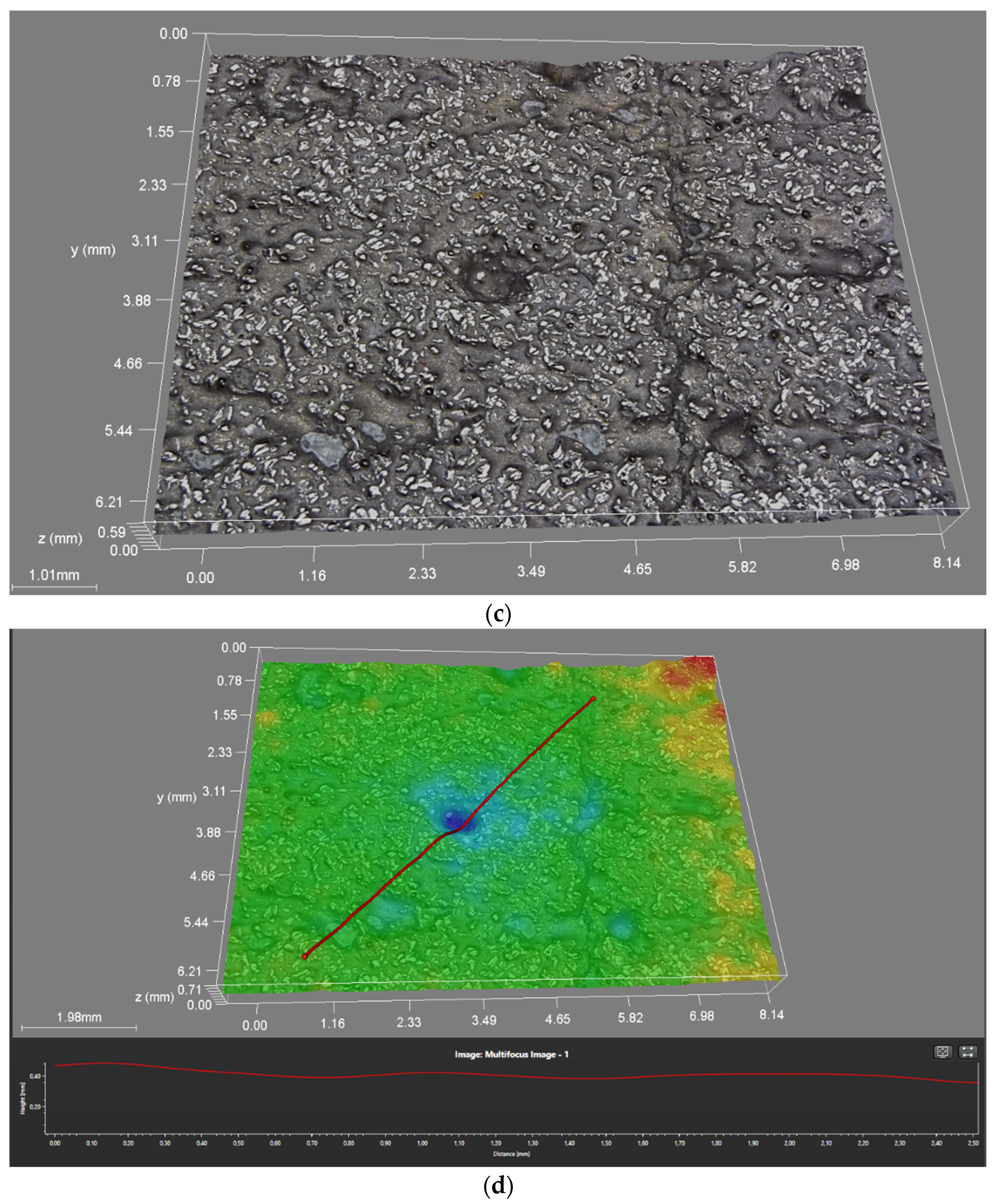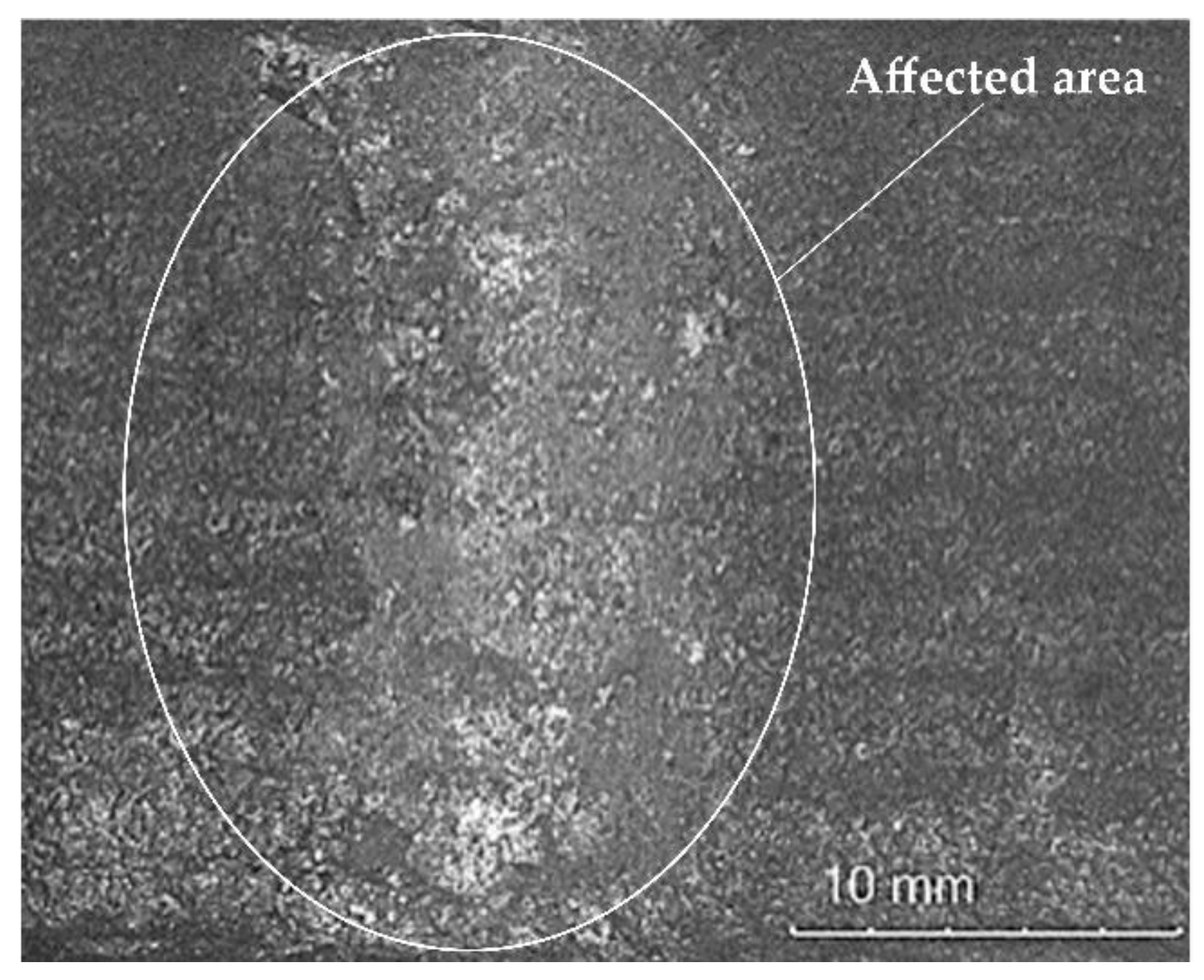1. Introduction
Processes taking place during the boring of oil and gas wells and the mining of rock in underground workings are extremely complex and difficult. Among other things, the aforesaid situation results from the mechanical properties of mined ground or rock layers and their inhomogenous geological structure (responsible for the fast wear of drilling tools used in the extractive industry). The necessity of the frequent replacement of worn-out mining blades (drills, boring crowns, cone cutters, etc.) significantly increases the costs of excavated raw materials. The properties of structural or tool materials depend both on the microstructure of the core of a given element and the condition of its surface layer. In cases of elements that do not transfer significant loads or are not exposed to intense abrasive wear during operation, the condition of the surface layer is of lesser importance. However, tools and machinery elements made of steel are exposed to abrasion combined with high unit pressure, impact loads, a corrosive environment, and high operating temperature [
1,
2,
3,
4]. In particular, the above-presented operating conditions affect tools being in direct contact with abrasives such as rock, sand, clay or other hard components present, among other things, in the ground. Globally, the aforesaid problems are present in the fossil fuels excavation industry. Power engineering and machine-building sectors compete intensively to develop modern technologies, making it possible to obtain a longer service life of tools and machinery elements used in coal mines, quarries, oil rigs and climate engineering, and during the construction of motorways. There is a high demand for spare parts of mining machinery and in particular for drilling and geological tools, which wear quickly and, consequently, lose their operational properties. Such tools have to be replaced very often, generating additional and, frequently, high costs, connected not only with the purchase or the refurbishment of new tools but, primarily, with the time needed to replace them. In addition, the dismantling and the reassembly of tools are responsible for costly downtimes. Presently, it is possible to observe a tendency of extending the service life of drilling and geological tools, even at the expense of significantly higher prices. Mining concerns find it more beneficial to buy more expensive tools characterised by higher quality than to stop production (several times) in order to retool machinery. Being a specific abrasive, the ground is not easy to define explicitly. This fact results mainly from the geological and engineering conditions of a given excavation area as well as from weather conditions present during the operation of the tool (affecting friction conditions in the ground-tool system). Abrasive wear, to which drilling and geological tools are exposed during operation in the ground, translates directly into the service life and the reliability of mining machinery. The inspection and the forecasting of tool wear in the ground prove very difficult. As of today, related engineering knowledge is limited to experimentation and the development of the so-called neural networks. The more detailed identification of the destruction of materials being in motion during extraction requires the combination of many elementary wear-related phenomena.
This issue was addressed by, among others, Kenny et al., 1976; Gharahbagh et al., 2013; Dewangan et al., 2014, 2015, Amoun et al., 2017, and Nahak et al., 2018 [
5,
6,
7,
8,
9,
10]. The problems encountered by the extractive industry necessitate the search for methods making it possible to reduce the wear of tools and machinery parts used in the extractive industry. Researchers and engineers constantly try to develop new ranges of tools, changing both design-related solutions and materials. However, the improvement of operational properties remains primarily connected with the improvement of the properties of the surface layer. An increase in hardness and abrasive wear resistance as well as surface processing involving the use of chemical elements improving corrosion resistance enable the extension of tool service life. It should also be noted that surface processing belongs to the most economically effective and useful methods applied in widely defined materials engineering. The making of layers characterised by new and unique properties may entirely change the operational parameters of every base material. Related publications concerning the subject discuss the obtainment of the increased abrasive wear resistance of tools primarily through the application of ceramic materials [
11,
12,
13], diffusive carbide [
14,
15,
16], boride coatings [
17,
18,
19] and thermally sprayed layers [
20,
21,
22]. Some of the above-named methods fail to produce desirable results and, in addition, are both energy-consuming and laborious. The aforesaid coatings are usually deposited on the entire surface of a given product, which is not always economically justified. Many researchers believe that the most promising technologies enabling the fabrication of abrasive wear resistant coatings should be based on high-energy density methods, including plasma or laser cladding.
Presently, in developed countries such methods are used to extend the service life of mining and drilling tools as well as to make corrosion resistant layers. The powder plasma transferred arc welding (PPTAW) or the laser metal deposition (LMD) are used by, among others, General Electric Oil&Gas and Honeywell International, i.e., leading oil and gas producers [
23,
24], as well as by many manufacturers of plasma arc welding systems. Various plasma arc welding methods can be applied to make surface layers using nearly any metallic material. In such cases, a deposited material becomes the primary component of the surface layer and, because of high process temperature, melts along with the substrate. Issues concerning the powder plasma transferred arc cladding process were discussed, among others, by Khaskin et al. (2016), Brunner-Schwer et al. (2018, 2019), Xia et al. (2010) and Gao et al. (2020) [
25,
26,
27,
28,
29]. Recently, it has been possible to observe very high interest in the application of plasma and laser cladding processes to make composite surface layers on steels and alloys of non-ferrous metals. The above-named layers are composed of the metallic matrix reinforced with hard particles of interstitial compounds. The matrix is usually made of iron [
30,
31], nickel [
32,
33] or alloys containing the aforesaid elements. The Ni-Cr-B-Si alloy is usually applied through thermal spraying [
34]. There are also numerous publications concerning the matrix containing cobalt and its alloys [
31,
35] (e.g., stellites [
36,
37]). However, stellites are less frequently referred to as matrix materials in composite layers and more often as homogenous layers. Particles reinforcing composite surface layers are various interstitial compounds, usually carbides but also nitrides and borides [
15,
17]. The most commonly used carbides include tungsten carbide (WC) [
30,
38], silicon carbide (SiC), boron carbide (B
4C) [
39] and titanium carbide (TiC) [
40].
Titanium carbide (TiC) particles are widely used to reinforce structural materials (both as volume and surface reinforcement). The plasma arc melting of metallic powder and TiC particles (the granularity of which was restricted within the range of 10 μm to 14 μm) on the surface of elements made of steel AISI 304 was investigated by Bober and Grześ (2015) [
41]. The use of the powder plasma transferred arc made it possible to obtain the proper joint of the deposited material components and provided appropriate adhesion to the substrate. Kindrachuk et al. (2016) [
42] made a TiC-Co composite layer deposited on the surface of steel 2Cr13. The layer, composed of several variedly structured sub-layers, was applied to extend the service life of machinery elements and power generation equipment. The substrate, affected by the plasma arc, underwent self-hardening, whereas the remaining part of the layer contained the zone of molten material and the dilution zone. The structure of the layer was composed of supersaturated cobalt dendrites with dispersed TiC particles. Depending on a steel grade, it is possible to obtain its reinforcement through self-hardening. However, in cases of superalloys, the surface layer changes its chemical composition and structure (as a result of diffusion and dilution), which is an undesired phenomenon. The chromium-nickel matrix is a very popular material of the MMC composite reinforced with TiC particles. According to Onuoha (2016) [
43], in the Cr-Ni alloy reinforced with TiC particles having a granularity restricted within the range of 4 μm to10 μm and 70–90 vol%, the larger grain size of the hard phase was responsible for increased abrasive wear. The mechanism of the aforesaid wear consisted primarily of micro-cutting. Sakamoto et al. (2015) [
44] used 2 wt% of TiC particles to significantly improve the mechanical properties of the Cr-Ni alloy. The TiC-Co-type composite layers were also examined by Jung et al. (2015) [
45]. The specimens were prepared through high-energy ball milling and liquid phase sintering. The size of the TiC particles was restricted within the range of 7 μm to 10 μm. The researchers emphasized the significance of the size of the particles of the hard phase and the type of the matrix material. It was demonstrated that fine-grained powders based on cobalt alloys inhibited the growth of TiC grains during sintering. The work does not contain any results of tribological tests.
Karantzalis et al. (2013) [
46] made a cobalt alloy-based composite reinforced with TiC particles [
46]. The components of the composite were melted using the vacuum arc melting method. It was found that a greater amount of the hard TiC phase favoured the grain growth in the metallic matrix. The results of the abrasive wear test proved promising. Another type of a sintered alloy, i.e., Co-TiC, was investigated by Jung et al. (2015) [
45]. It was revealed that the modification of the initial powder material through the addition of cobalt nanoparticles decreased the powder sintering temperature. The obtained alloy was characterised by favourable thermal stability and advantageous mechanical properties. In their research, Anasori et al. (2016) [
47] demonstrated that a magnesium alloy containing 5, 20 and 50 vol% of TiC and Ti
2AlC sintered carbides was characterised by excellent energy absorbability. The favourable size of the particles reinforcing the matrix was restricted within the range of 5 μm to 15 μm. According to the Authors, the damping effect was obtained owing to the natural ability of materials to absorb energy, the large matrix-carbide contact area and a different thermal expansion coefficient. However, the aforesaid factors also contributed to an increased number of dislocations.
The above-presented research results concerning the making of metal matrix composite layers reinforced with TiC particles justified the formulation of the following conclusions:
- -
TiC is a very promising material reinforcing the matrix of metallic materials (MMC) in applications requiring high abrasive wear resistance under conditions of dry sliding friction. Matrix materials include many metals and alloys, e.g., cobalt, nickel, magnesium and aluminum;
- -
All tests were based on the application of various combinations of the hard reinforcing phase and the metal matrix;
- -
Abrasive wear resistance tests of Me-TiC-type composite layers were primarily performed at room temperature and under conditions of dry sliding friction;
- -
In most tests, the composite material was obtained using sintering methods, where the volume fraction of carbides was restricted within the range of 40% to 60%. The microstructural tests revealed the proper dilution and the uniform distribution of alloying elements and carbide particles in the matrix material;
- -
Depending on the type of the metal matrix and test conditions, the effect of the high content of TiC in the composite can be both favourable [
42] and disadvantageous [
48]. However, it should be noted that reinforcing the metal matrix with TiC particles favourably reduces abrasive wear regardless of the type of the matrix and the reinforcement-matrix ratio in the composite.
The analysis of related reference publications and the results of individual research led to the conclusion that it was possible to obtain a composite surface layer in the ceramic reinforcement–metal matrix system of phases, the microstructure and abrasive wear resistance of which would be similar to those of sintered carbides [
49].







